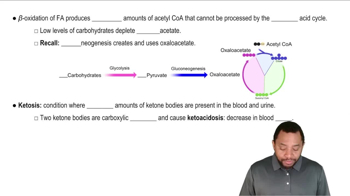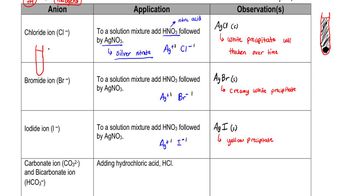Consider the reactions of ketogenesis.
c. What is the essential role of ketone bodies during prolonged starvation?
 Verified step by step guidance
Verified step by step guidance Verified video answer for a similar problem:
Verified video answer for a similar problem:


 1:29m
1:29mMaster Ketone Bodies Concept 1 with a bite sized video explanation from Jules
Start learning